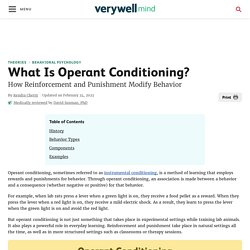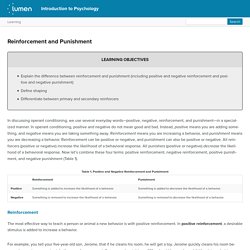

While teaching such behaviours and values to children, parents often have to use various methods to drill the correct behaviours into their children.
In such cases, parents may find the concepts of reinforcement and punishment useful in order to strengthen or reduce the probability of certain behaviours. This is especially so with teenage children, where constant conditioning is needed at the vital stage of their life.
What Is Operant Conditioning and How Does It Work?
Operant conditioning, sometimes referred to as instrumental conditioning, is a method of learning that employs rewards and punishments for behavior.

Through operant conditioning, an association is made between a behavior and a consequence (whether negative or positive) for that behavior.1 For example, when lab rats press a lever when a green light is on, they receive a food pellet as a reward. What is Operant Conditioning? Reinforcement and Punishment. Learning Objectives Explain the difference between reinforcement and punishment (including positive and negative reinforcement and positive and negative punishment)Define shapingDifferentiate between primary and secondary reinforcers In discussing operant conditioning, we use several everyday words—positive, negative, reinforcement, and punishment—in a specialized manner.

In operant conditioning, positive and negative do not mean good and bad. Instead, positive means you are adding something, and negative means you are taking something away. Reinforcement means you are increasing a behavior, and punishment means you are decreasing a behavior. Positive Reinforcement. Negative Reinforcement. Reinforcement and Punishment. Positive Punishment. Negative Punishment. Learning: Negative Reinforcement vs. Punishment. Summary of Negative and Positive Reinforcement and Punishment. Applying Reinforcement and Punishment to Teenagers. Guidelines to Applying Positive Reinforcement. Guidelines to Applying Negative Reinforcement. Guidelines to Applying Positive Punishment. Guidelines to Applying Negative Punishment. Conclusion. Parting Thoughts.